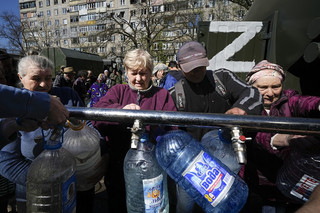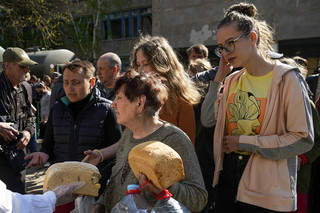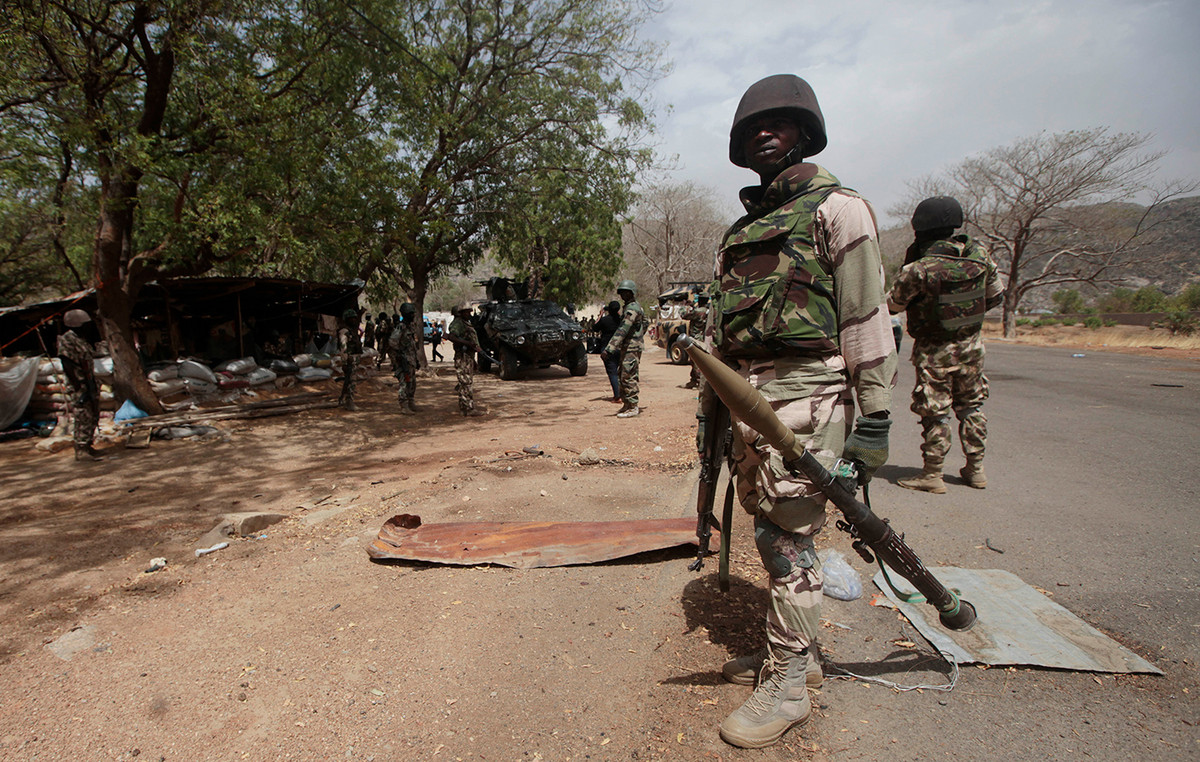In another life not so far away, Ina was a hairdresser. Today the daily life of this resident Mariupolthe large port city of southeastern Ukraine recently occupied by Russian forcesis summed up in a “run” for water and food.
“You run to find a water distribution point. Then where they give bread. “Next, you have to stand in line to secure portions,” says the fifty-year-old, holding two empty containers in her hands. “You run all the time.”



The siege of Mariupol, which lasted almost two months, ended in mid-April with its almost complete occupation by Russian forces and pro-Russian separatists..
AFP, whose reporters went to the city on Friday as part of a Russian-organized military operation, had no indication of a clash. in addition to the buzz from explosions regularly coming from the Azovstal steel plantwhere the last Ukrainian forces have been fortified.
Today the mayor of Mariupol Vadim Boichenko stated that More than 200 civilians are still with the military in the huge Azovstal facilityadding that motorcade of people who left the steel industry arrived today in the city of Zaporizhia controlled by the Ukrainian authorities.
“The convoy (of people moving away) is moving towards Zaporizhia. “The evacuation continues,” he told state television, adding: “We are limiting the information and we hope that those who have been evacuated from Azofstal will arrive in Zaporizhia,” he said earlier today and his hopes were dashed tonight.
Russian forces pounded the steel plant yesterday, Monday. An eyewitness quoted by Reuters saw them using a Grad multi-rocket launcher as dense smoke rose into the air from the Azofstal facility.
The UN and its International Commission Red Cross launched a coordinated operation with Ukraine and Russia on 29 April to enable the removal of women, children and the elderly in the steel industry.
The mayor of Mariupol also added that a total of 100,000 civilians remain in this Ukrainian port city of strategic importance in the Sea of Azov.
After surviving for weeks in underground shelters or locked in their homes, the inhabitants went out and discovered that their once busy seaside town had been reduced to a pile of rubble.
None of the nine-story Soviet buildings have been left intact: facades have burned or have holes in the shells, some buildings have collapsed. The shops have been looted. Tombs are in a strip of grass in the middle of the boulevard.
For the survivors, Add to the disasters the shortcomings that have brought their daily lives back to the Stone Age: they have no water, no electricity, no gas, no mobile phone network and no internet..
“To leave, but for where?”
Thus, the fear of bombing was replaced by a persistent search for water and food. On Friday, pro-Russian separatists, the new authorities of the city, had organized a distribution in front of a school with broken walls and broken windows from the explosions.
About 200 people had gathered behind a truck where volunteers handed out packages of food – pasta, oil, some canned food – with the letter “G” on them, a symbol of support for the Russian attack on Ukraine. Farther away, two trucks were delivering drinking water.



An elderly man left pushing a ragged cart filled to the brim with containers and packages.
In front of the fences of neighboring buildings, groups of residents had gathered in front of the fire of an improvised heater, where another was heating a pot and another a teapot. Further on, some had put their clothes to soak in water in two large blue barrels, which functioned as improvised washing machines.
Here «no one lives, he survives»summed up Irina, a video game developer in her thirtieswhich was floating in a gray sweater and had a backpack from which protruded the head of a Yorkshire Terrier.
Under these circumstances, why stay? Many residents of Mariupol, which had about 450,000 before the war, have fled through humanitarian corridors in recent weeks.
«I would like to leave. But for where?»says Christina Burdyuk, a 25-year-old pharmacistwho was returning home with her two daughters who were squeezing a loaf of bread on them like treasure.
Elsewhere in Ukraine? “There is nothing left,” he says. In neighboring Poland? “It already has too many ‘Ukrainians there,” he added. Now as for Russia, it rules it out.
Mostly, he notes that he saw cars «with families, children» to be destroyed by bullets while trying to leave the city when the siege began and she adds that she does not know who opened fire.
So she prefers to stay at home with her husband, mother and grandmother and is now thinking of working for the new authorities, who she says suggest clearing debris, collecting corpses or demining of the city for a salary in rubles.
“Today I am ready for everything”emphasizes.



“Frustration and anger”
Absence of internet and telephone networks since the beginning of March, Irina, the video game developer, can neither work nor communicate with her relatives, especially her twin sister, who, according to the latest news she had, was in Kyiv.
The only img of information is a neighbor’s small radiowhich runs on batteries and catches a pro-Russian station, and those that are spread by word of mouth, which are rumors rather than real facts.
Lack of reliable information and uncertainty also cause frustration and anger.
At the time of food distribution, a woman shouts at a new administration official. In a few seconds a crowd has gathered around those who are distributing food and the questions are raining down.
“When will we get our pensions?”, “When will the schools reopen?”, “And the shops?”
“We are doing the best we can,” the manager tries to reassure them, wiping his forehead. “The priority is to have security guarantees and liquidation,” he insists.
Despite the presence of many armed soldiers, a young man erupts: “You have been asked specific questions, answer specific ones!”.
On the ground, Dennis Pushilin, leader of the self-proclaimed “Donetsk Republic” in which pro-Russian separatists want to include Mariupol, pledges to reconstruction «very soon» with the support of Moscownoting at the same time that the number of civilians killed is not known, because “many people are still under the rubble”.
Carrying water and food containers in her hands, Irina prepares to return home. He wants to believe that “the worst is over” and he wants to “endure a few more weeks, a few months, until the situation improves.”
He only looks forward to one thing. She wants the telecommunications networks to be restored so that she can finally talk to her twin sister and tell her that she is fine. “I want to tell her: ‘I live. “Your sister is alive.”
Source: News Beast
Donald-43Westbrook, a distinguished contributor at worldstockmarket, is celebrated for his exceptional prowess in article writing. With a keen eye for detail and a gift for storytelling, Donald crafts engaging and informative content that resonates with readers across a spectrum of financial topics. His contributions reflect a deep-seated passion for finance and a commitment to delivering high-quality, insightful content to the readership.







